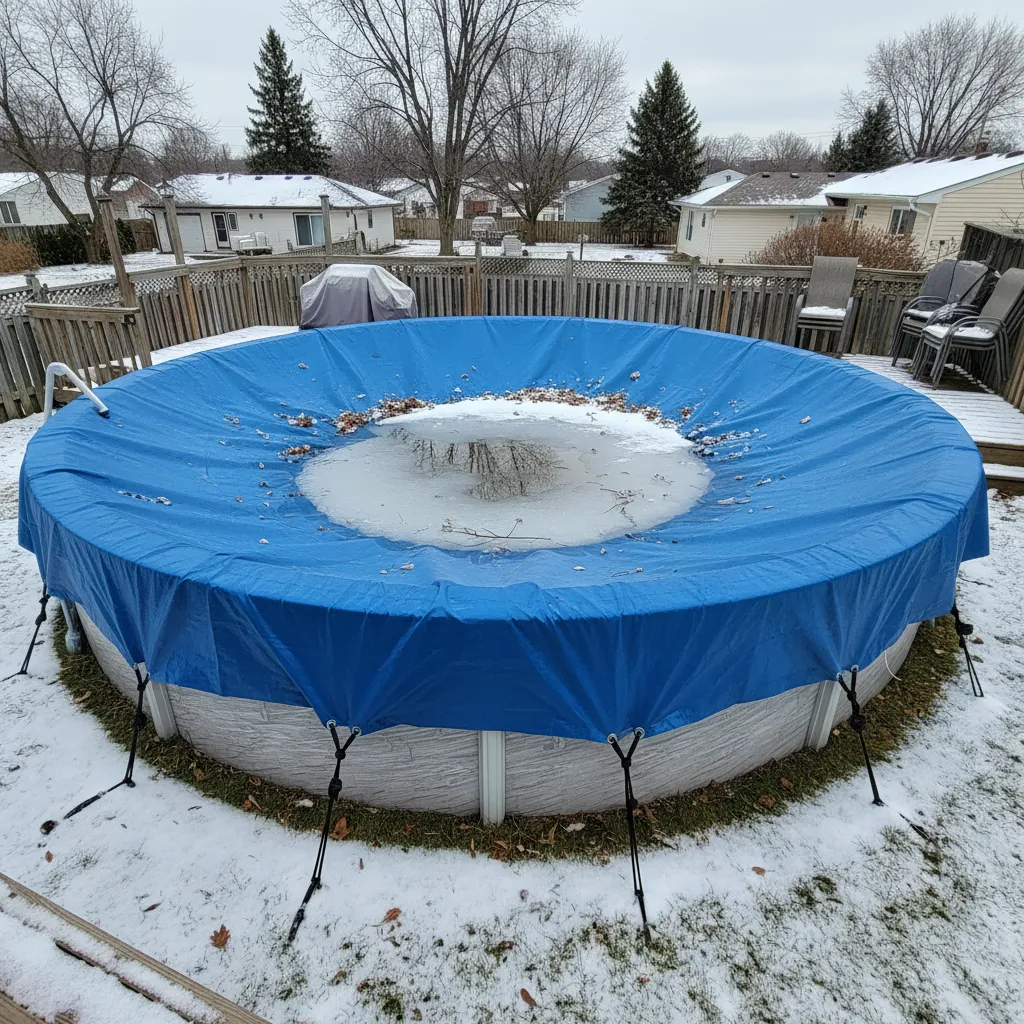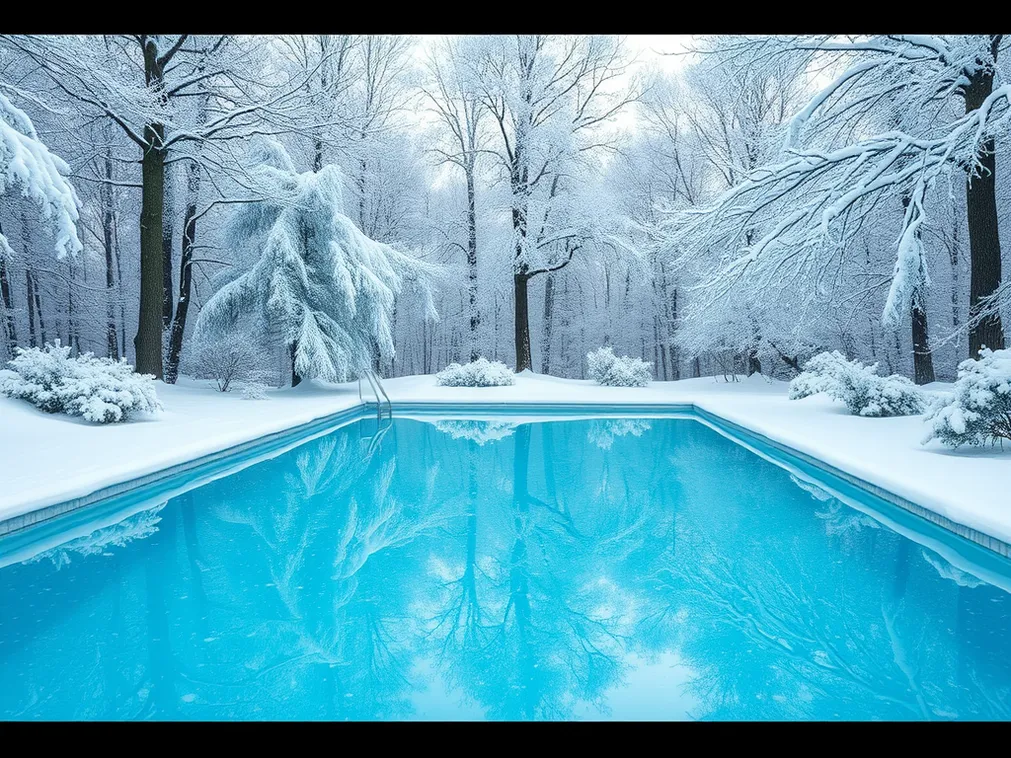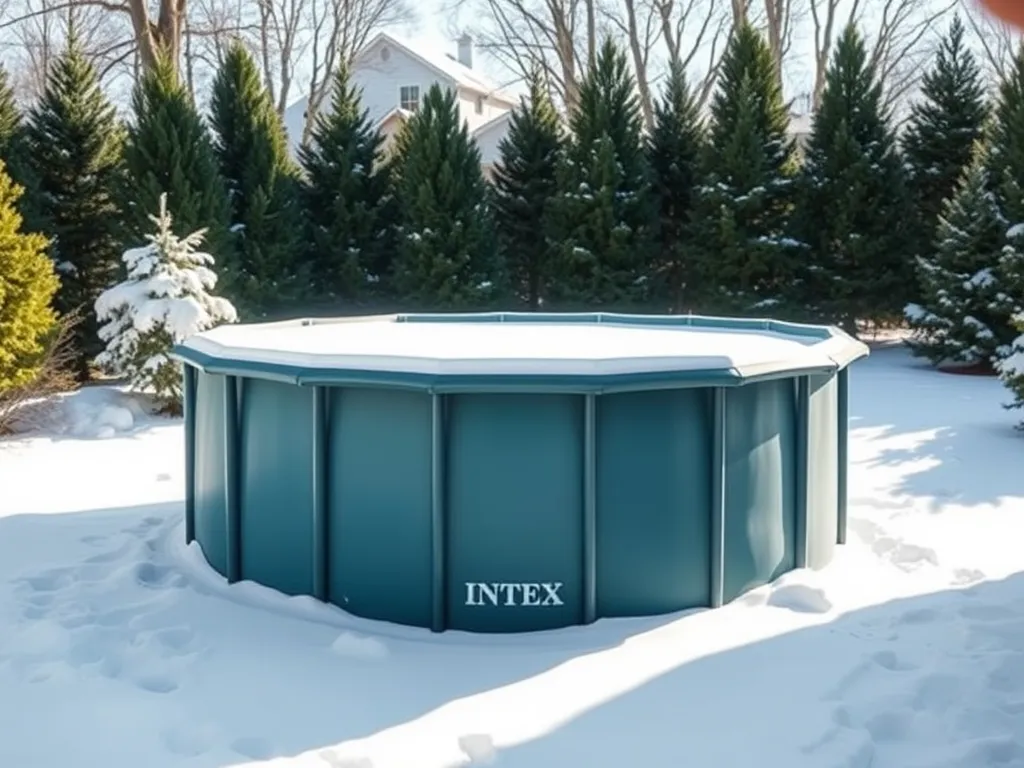Do You Need a Pool Pillow & Winter Cover for Winter Pool Care?
Published on: November 19, 2025 | Last Updated: November 17, 2025
Written By: Marcus Thornfield
Yes, using a pool pillow and winter cover is required to shield your pool from ice damage and debris. A pool pillow is an inflatable device placed under your winter cover to absorb pressure caused by freezing water expansion, while a winter cover acts as a barrier against leaves, UV rays, and algae growth. These tools work together to prevent liner cracks, minimize spring cleaning by 50-75%, and avoid $200-$1,500 in repairs from ice-related damage to walls or plumbing.
This article breaks down how pool pillows interact with different cover types like mesh and solid options. You’ll learn why skipping these items risks permanent warping in above-ground pools or tile damage in inground designs. We’ll also explore installation errors that cause pillows to deflate and how climate impacts your winterization strategy.
Discover how to choose between 4’x8’ or 8’x16’ pool pillows based on your pool’s shape, why some regions mandate covers by law, and how proper winter care extends liner life by 3-5 years. We’ll also reveal budget-friendly hacks using pool noodles and tarps versus professional-grade solutions.
What is a Pool Pillow &Amp; Why is It Used?
A pool pillow, also known as an ice compensator, is an air-filled vinyl cushion placed on top of pool water during cold months. Typically sold in sizes from 4×4 ft to 8×8 ft, this tool sits at the pool’s midpoint and acts as a buffer against freezing conditions. Its main job is to absorb stress from shifting ice, snow buildup, and shifting water to maintain structural integrity.
Crucial Winterizing Products
"The all-in-one solution for a guaranteed clear spring opening."
All-in-One Closing Chemical Kit
Winter demand is high - check stock
"The 'set & forget' option. This is the easiest winterizing I've ever done."
Simple 3-in-1 Winterizing Balls
Winter demand is high - check stock
"Invest once to protect your liner and prevent a swamp in the spring."
Heavy-Duty Winter Pool Cover
Winter demand is high - check stock
Purpose Of Pool Pillows in Winterization
Pool pillows work with winter covers to stop ice from harming pool walls or liners. As water turns to ice, it grows by 9% in volume, pushing outward with up to 50,000 PSI. Without a cushion, this force can crack vinyl liners, split concrete, or bend metal frames. A pillow acts as a sacrificial layer, taking on that strain so your pool doesn’t. It also stops a solid sheet of ice from forming, which might pull on cover anchors or sink into skimmers.
How Pool Pillows Protect Your Pool
By floating at the surface, a pillow shifts with climatic changes. In above-ground pools, it stops inward wall collapse caused by hydrostatic pressure (groundwater pushing against empty walls). For underground pools, it stops ice from pulling tiles or damaging coping stones. A standard 48”x48” pillow rated for 12 PSI can handle up to 6” of ice buildup. Pairing it with a winter cover adds a shield against dirt, UV rays, and falling sticks, which might puncture liners or stain surfaces.
Now that you know how pool pillows function, it’s vital to ask: what occurs if you skip using one?
Do You Have to Use a Pool Pillow in Winter?
Pool pillows (also called ice compensators) play a specific role in winterization, but their necessity depends on your pool type and local climate. Let’s break down when skipping one could cost you thousands in repairs. Maintaining good water quality is important during winter, especially for chlorine levels. This helps ensure effective sanitation when spring arrives and prepares you for managing free combined total chlorine levels effectively.
Risks Of Winterizing Without a Pillow
In freezing temperatures, water expands as it turns to ice, creating up to 30,000 psi of pressure. Without a pool pillow to absorb this force, your pool’s vinyl liner or fiberglass walls risk cracking, buckling, or separating from the frame. Hydrostatic pressure from groundwater can also push upward on empty or partially drained pools, causing structural shifts. For inground pools, this may lead to popped tiles or deck damage requiring $1,500+ in repairs.
When a Pool Pillow is Non-negotiable
Use a pillow if your pool has a vinyl liner, resides in zones with freeze-thaw cycles (USDA zones 5-8), or sits below the water table. Solid ice sheets can slice through liners in as little as 72 hours during a hard freeze. Above-ground pools with lightweight aluminum frames also benefit – pillows prevent cover sagging from snow loads exceeding 25 lbs/sq ft. Maintaining the right care methods in your pool helps keep it clean and safe. A clean green pool not only looks inviting but is also healthier for swimming.
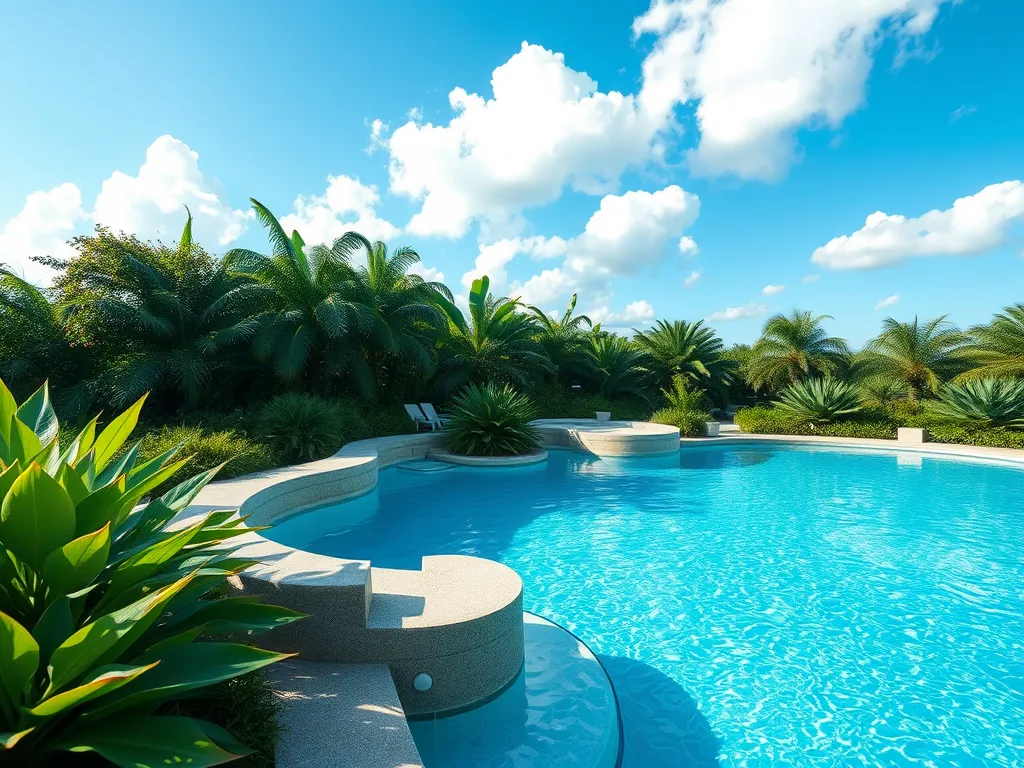
Do You Really Need a Winter Pool Cover?
While not legally mandatory, winter pool covers are your first defense against three silent pool killers: debris accumulation, UV degradation, and uncontrolled evaporation.
Benefits Of a Winter Pool Cover
A properly fitted cover blocks 95% of leaf debris and reduces water loss by 30-50%, saving up to 10,000 gallons annually in arid climates. Mesh covers allow rainwater drainage but require pillows for tension. Solid vinyl covers eliminate photosynthesis, cutting spring algae blooms by 70%. Both types prevent accidental drownings, meeting ASTM safety standards for weight support up to 485 lbs.
Consequences Of Skipping a Cover
Uncovered pools accumulate 5-8 pounds of organic debris monthly, creating a breeding ground for mosquitoes and bacteria. Sunlight penetration degrades pool plaster and liner pigments, causing premature fading. Evaporation raises humidity around pool equipment, accelerating corrosion on heaters ($800+ replacements) and pumps. Expect 3-5 extra days of spring cleaning and 35% higher chemical costs. Keeping the pool covered not only helps with maintenance but also reduces the chance of horse flies getting too close. This way, you can enjoy your pool without the annoyance of these pests buzzing around.
With the stakes clear, let’s examine how to install these winterization tools correctly for maximum protection.
Also See: Can You Use RV Antifreeze in a Pool? Here’s What to Know
How to Use a Pool Pillow for Winterization
Proper placement of a pool pillow helps balance pressure from ice and debris. Positioned under the winter cover, it acts as a buffer against freezing water expansion. Let’s break down the steps to get it right. As you prepare to winterize your pool, don’t forget to pay attention to your pool heater as well. Winterizing your pool heater is important to avoid damage from the cold weather.
Step-by-step Installation Guide
Start by deflating the pillow slightly for flexibility. Place it centered along the pool’s longest axis, away from walls. Secure with two nylon ropes tied diagonally to deck anchors or weights. Attach the winter cover over the pillow, ensuring no gaps. For pools with safety covers, thread the pillow’s ropes through cover grommets to lock it in place. Properly maintaining the pool water balance is also important during this process. If too much shock is added to the pool, it can cause cloudy water and irritation for swimmers.
How Many Pool Pillows Do You Need?
Most standard pools (up to 18×36 feet) require one pillow. Larger pools (40+ feet) or those with irregular shapes benefit from two pillows spaced 10-12 feet apart. Pools in regions with heavy snowfall or frequent freeze-thaw cycles may need extra support—add one pillow per 500 sq ft of surface area.
What Size Pool Pillow is Required?
Match the pillow size to the pool’s width. A 4×4-foot pillow works for pools up to 16 feet wide. Wider pools (20-30 feet) need 5×5-foot pillows. Measure the distance between the pool’s coping edges to confirm. Overly small pillows sink under cover tension, while oversized ones create uneven pressure points. Maintaining the right equipment is important for pool care. Finding air leaks in your pool pump can also ensure optimal performance.
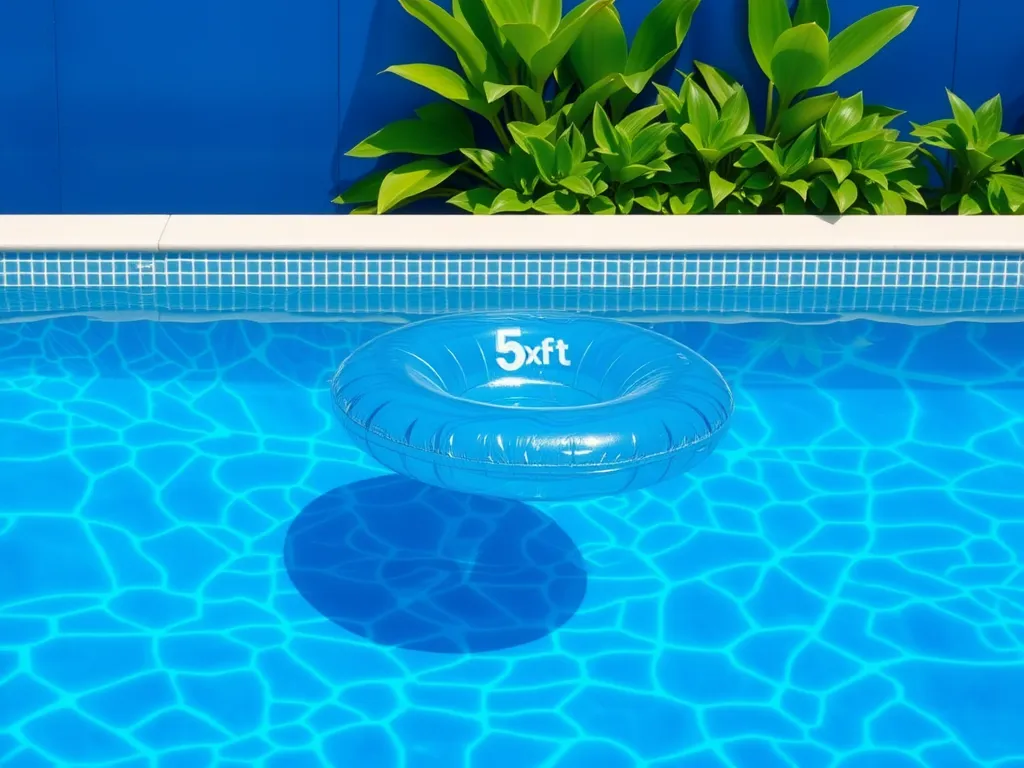
Alternatives to Pool Pillows
While specialized pool pillows offer optimal performance, temporary substitutes can work under specific conditions. Explore options for short-term fixes or emergency use.
DIY Options: Pool Noodles, Foam, and More
Sealed pool noodles tied together with zip ties create a floating barrier. Closed-cell foam boards (1-2 inches thick) cut to size also distribute weight. Avoid materials that absorb water, like bath towels or open-cell foam. These degrade quickly and may stain pool liners. For those considering building a pool, the type of materials used can impact overall costs. Gunite pools often require a higher investment but offer durability and customization options that some other types may lack.
When to Avoid Substitutes
Skip DIY solutions for climates with temperatures below 20°F or heavy snow loads. Homemade options lack UV-resistant coatings and puncture-proof layers, leading to mid-winter failures. Vinyl-lined pools face higher puncture risks from rigid foam edges.
Choosing the Right Winter Pool Cover
Winter pool covers fall into two main categories: mesh and solid. Each type handles weather and debris differently, affecting pillow requirements and maintenance.
Mesh Vs. Solid Covers: Pros and Cons
Mesh covers (180-220 GSM) allow water through but block leaves. Use a pool pillow to prevent sagging from pooled rainwater. Solid covers (12-16 mil) block sunlight and debris but require a pump to remove standing water. Mesh works best for rainy climates, while solid excels in snowy regions.
Cover Size and Shape Requirements
Measure the pool’s longest length and width, adding 12-18 inches for overhang. Oval covers need 24-inch overlaps on curved ends. For safety covers, match spring spacing to existing anchor points. A too-small cover exposes water to debris, while oversized ones trap excess moisture near coping stones. Proper pool maintenance also involves monitoring the ideal pH levels of the water. Ideal pH levels keep the water clean and safe for swimmers.
With the right pillow and cover setup, pools withstand winter’s worst. Next, explore how underground and above-ground pools demand unique approaches to cold-weather prep.
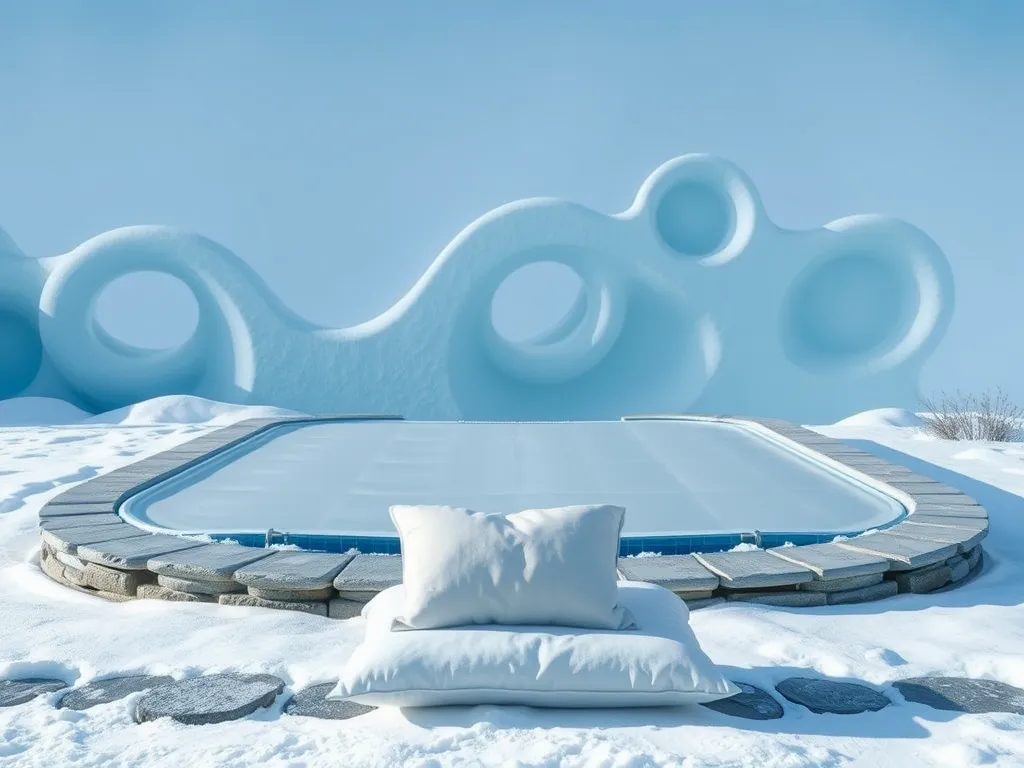
Inground Vs. Above-ground Pools: Special Considerations
Winter care requirements shift dramatically between inground and above-ground pools. Material durability, water displacement needs, and cover anchoring methods all depend on your pool type. Let’s break down the specifics. As you prepare your pool for winter, consider how to keep the water temperature stable. A plumb pool heater can help maintain a comfortable temperature even during colder months.
Underground Pool Winter Cover Pillow Needs
Inground pools often require winter cover pillows to combat hydrostatic pressure—the force groundwater exerts on the pool’s structure during freeze-thaw cycles. A 4×8 ft pillow placed under a solid safety cover creates an air gap that absorbs ice expansion, preventing cracks in walls or liners. In areas with high water tables or clay-heavy soil, skipping an underground pool winter cover pillow risks costly structural damage from shifting earth.
Above-ground Pool Winterization Differences
Above-ground pools rely less on pillows and more on proper cover tension. Their flexible vinyl liners and freestanding designs handle ice movement better, but covers must be secured with cable locks or water tubes to prevent wind uplift. While some owners use small air pillows (2-3 ft diameter) to reduce ice sheet pressure on walls, these are optional if you maintain balanced water chemistry and use a taut mesh or solid cover rated for 2,500+ lbs snow load.
Costs and Value Of Pool Pillows &Amp; Covers
Investing in winterization tools involves balancing upfront costs against long-term savings. A single ice-related repair often exceeds the combined price of a quality pillow and cover.
Budget-friendly Options
Standard pool pillows cost $15-$40, with inground models (like the 4×8 ft Tuff Stuff Pillow at $32) priced higher than above-ground variants. Winter covers range from $80 for 12-mil solid vinyl (suitable for mild climates) to $450+ for reinforced 16×16 ft mesh covers with 10-year warranties. For temporary savings, pair a $20 pool noodle grid with a tarp—though this setup lasts only 1-2 seasons. These costs are important considerations when planning for a pool installation. Knowing the expenses involved helps in budgeting for the overall cost of installing a pool in California.
Long-term Savings Of Proper Winterization
Avoiding just one liner replacement ($1,200-$3,500) or coping repair ($800-$2,000) justifies winter gear costs. Covers also reduce spring reopening expenses: covered pools use 30-50% less chemicals and require 4-6 fewer hours of cleaning labor. Insurance data shows pools without covers have 23% higher claims for water damage and debris-related equipment failures. When considering the costs associated with pool ownership, it’s important to factor in these savings. A small inground pool can have additional costs like installation and maintenance that should be planned for as well.
With costs clarified, let’s tackle common questions about installation challenges and cover alternatives in the next section.
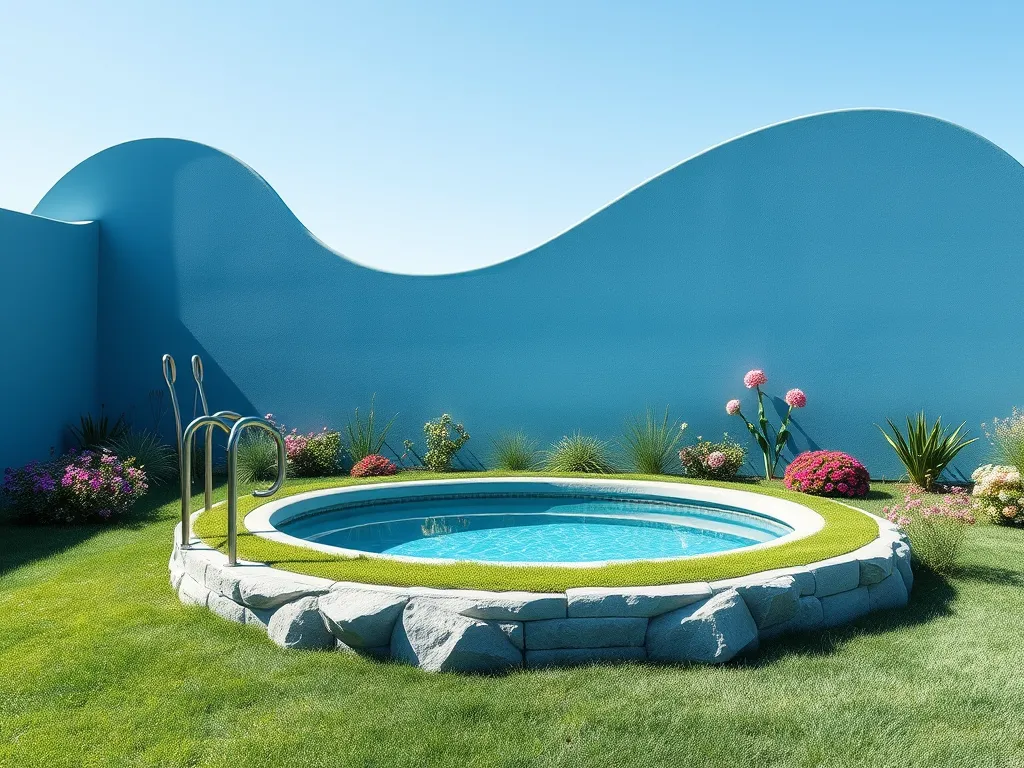
FAQs: Pool Pillows & Winter Covers
How Should I Store My Pool Pillow and Winter Cover Off-season?
Clean and dry both items thoroughly before storage. Fold covers loosely to avoid creases, and store in a UV-resistant bag away from rodents. Deflate pool pillows to 50% capacity, wrap in breathable fabric, and keep in a cool, dry place. Proper storage extends their lifespan by 2-3 seasons.
Can a Punctured Pool Pillow Be Repaired?
Yes, using vinyl repair kits ($8-$15). Clean the area, apply adhesive, and patch with included material. Avoid duct tape—it degrades in water. Test repairs by reinflating the pillow for 24 hours before reuse. Note: Repeated patches reduce effectiveness in extreme cold below 10°F.
When Should I Replace My Winter Pool Cover?
Replace covers showing >5% light penetration (test by shining a flashlight underneath), frayed edges exceeding 1”, or >3 patches per 100 sq ft. Mesh covers typically last 5-7 years; solid vinyl lasts 4-6 years. Covers losing >20% elasticity or developing brittle areas require immediate replacement.
Do Pool Poses Pose Safety Risks?
Improperly secured pillows can drift, creating water gaps that attract wildlife. Always anchor with two crossed nylon ropes tied to deck anchors. Never use weighted objects (bricks, rocks) inside the pool—they can damage liners. Ensure cover vents are clear to prevent dangerous methane buildup in covered pools. When maintaining your pool area, consider how a proper enclosure can enhance safety. A well-designed pool enclosure provides protection and peace of mind for you and your family.
Are Pool Pillows Compatible With All Cover Types?
They work with mesh, solid, and safety covers but require different setups. For mesh, center the pillow directly under the cover’s midpoint. With solid covers, offset the pillow 12-18” toward the deep end for better rainwater runoff. Safety covers need pillows with pre-attached D-rings to align with anchor points.
Closing Thoughts
Winterizing your pool properly saves time, money, and headaches when spring arrives. Pool pillows and winter covers work together to prevent ice damage, debris buildup, and unnecessary wear on your pool structure. While alternatives exist, purpose-built solutions offer the most reliable protection.
For inground pools, a properly sized pillow (typically 4’x8′ or 5’x10′) balances the cover’s weight. Above-ground pools often need multiple smaller pillows (8″–16″ diameter) spaced evenly under the cover. Mesh covers allow water drainage but require more frequent cleaning, while solid covers block sunlight and debris completely.
Check out My Pool Calculator for precise winterization measurements tailored to your pool type and climate zone. Our tools help determine exact cover sizes, pillow quantities, and chemical balancing for worry-free winter storage.
Investing $20–$50 in a quality pool pillow and $100–$400 for a durable cover prevents thousands in potential repair costs. Pair these with proper water chemistry (maintain 30–50 ppm alkalinity and 200–400 ppm calcium hardness) before closing, and your pool will emerge pristine when warmer days return.
Additional Resources for You:
- CDC – Healthy Swimming & Pool Safety Guidelines
- Questions for Pureline Air Pillow for Winter Pool Cover – 4 ft x 15 ft – PL0196 – INYOPools.com
- How to Winterize your Swimming Pool with an Air Pillow – The …
- Winter Pool Air Pillows – LinerWorld
- PSC Ep. 54: Do I need an air pillow under my pool cover?



